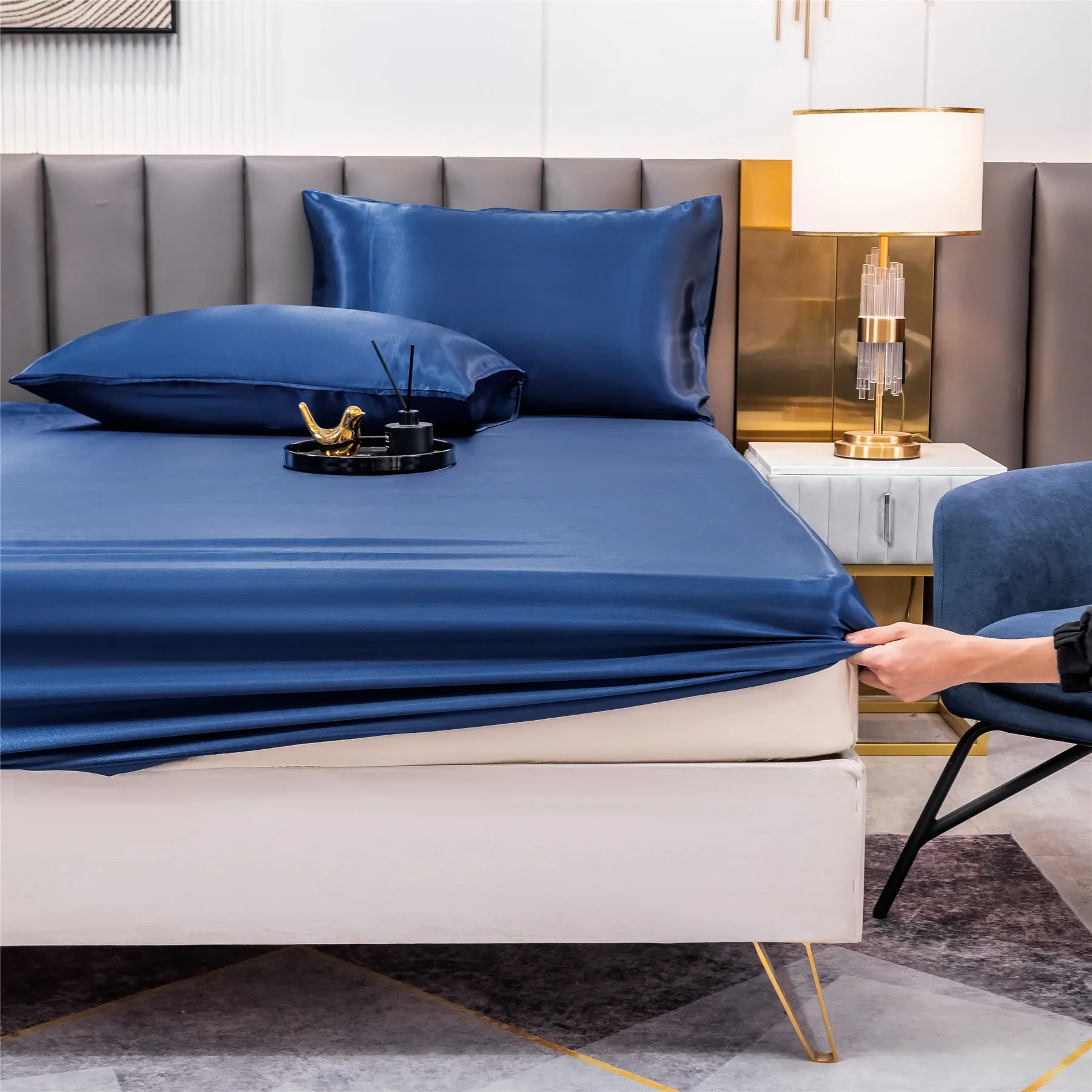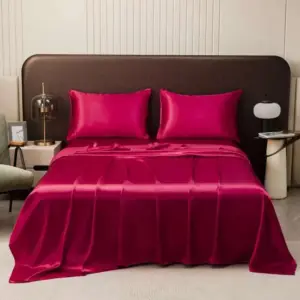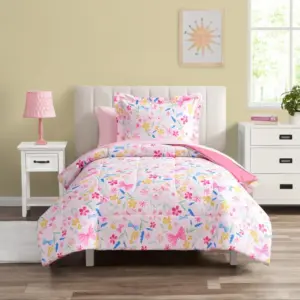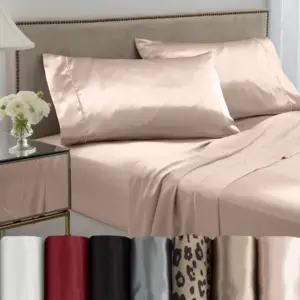Introduction
When shopping for luxury bedding, most of us have been conditioned to believe that thread count is the ultimate indicator of quality. But here’s a revelation that might surprise you: thread count is largely irrelevant when it comes to silk sheets. In the world of silk bedding, momme weight—not thread count—is the true measure of quality and luxury.
Unlike cotton, silk has unique properties that require different quality measurements. The exceptional softness, durability, and feel of silk sheets depend primarily on their momme weight, along with several other factors that traditional thread count measurements simply don’t address.
Throughout this article, you’ll discover:
* What momme weight is and why it matters more than thread count
* How to identify truly high-quality silk sheets
* What range of momme weight offers the best balance of luxury and durability
The amazing benefits of Mulberry silk sheets go far beyond what thread count alone can tell you. By understanding the proper metrics for evaluating silk, you’ll be empowered to make smarter investments in bedding that truly delivers the luxury experience you deserve.
What is Thread Count and Why It’s Misapplied to Silk
Thread count refers to the number of threads (both horizontal and vertical) woven into one square inch of fabric. This measurement works well for cotton and other similar fabrics, where the density of threads correlates reasonably well with softness and durability.
Thread Count Definition: The sum of warp (vertical) and weft (horizontal) threads contained in one square inch of fabric.
However, applying thread count to silk is fundamentally flawed for several important reasons:
First, silk threads are naturally much finer than cotton—approximately one-third the diameter. This means that even at identical thread counts, the fabrics would feel entirely different and have different properties.
Second, the natural properties of silk and its traditional weaving techniques differ dramatically from cotton. Silk’s exceptional smoothness comes from the protein structure of the fiber itself, not primarily from how densely it’s woven.
Perhaps most problematically, some manufacturers artificially inflate thread counts by using multiple-ply threads (twisting several threads together) and counting each strand separately. This deceptive practice makes thread count numbers essentially meaningless, especially for silk.
Despite these issues, you’ll still see thread counts advertised for silk sheets because consumers have been trained to look for this metric. Many retailers capitalize on this familiarity rather than educating customers about more appropriate quality measures.
The cotton vs silk quality metrics are fundamentally different, making direct comparisons misleading at best. To truly understand silk quality, we need to look beyond thread count to more relevant measurements.
Understanding Momme: The Authentic Measure of Silk Quality
Momme (pronounced “moe-mee”) is the traditional and most accurate measurement of silk quality. Unlike thread count, which simply counts threads, momme measures weight—specifically, the weight in pounds of a piece of silk measuring 45 inches by 100 yards.
Momme Definition: A unit of weight traditionally used in Japan to measure the density of silk, equal to the weight in pounds of a piece of silk 45 inches wide by 100 yards long.
This measurement originated in ancient Japan and has remained the industry standard for silk quality for good reason: it directly reflects how much silk material is actually present in the fabric.
The significance of momme weight cannot be overstated. Higher momme means more silk has been used in the fabric, resulting in:
- Greater durability and longevity
- More substantial feel and better drape
- Enhanced temperature regulation properties
- Improved resistance to tearing or wearing thin
Lower momme silk (12-16) feels more delicate and light—almost ethereal—but may not stand up to regular use as bedding. Mid-range momme silk (19-22) provides the perfect balance for most bedding applications, while high momme silk (22-30) offers exceptional durability and a more substantial, luxurious feel.
What makes momme so valuable as a measurement is that it can’t easily be manipulated. While thread count can be artificially inflated, momme is a straightforward weight measurement that reveals the actual amount of silk used in production.
Understanding the momme vs thread count silk guide will help you make more informed decisions when investing in silk bedding, ensuring you’re getting the quality you expect and deserve.
Momme vs. Thread Count: A Direct Comparison
To fully appreciate why momme is superior to thread count for measuring silk quality, let’s compare these two systems directly:
| Feature | Thread Count | Momme Weight |
|---|---|---|
| What it measures | Number of threads per square inch | Weight of silk per standard size |
| Primary focus | Density of weave | Amount of silk used |
| Typical range for quality | 400-800 for silk (often inflated) | 19-25 for bedding |
| Manipulation potential | High (through ply counting tricks) | Low (weight is objective) |
| Correlation to durability | Weak for silk | Strong direct correlation |
| Measurement origin | Western textile industry | Traditional Japanese silk trade |
The fundamental difference is that thread count focuses on how many threads are packed into the fabric, while momme measures how much silk material is actually present. A higher momme weight inherently means more silk has been used to create the fabric, resulting in better durability, drape, and feel.
For example, a 22 momme silk sheet might be marketed with a thread count of 600, but this thread count figure tells you very little about its actual quality. Two different 600 thread count silk sheets could have dramatically different momme weights, and the one with higher momme will almost invariably be the superior product.
Laboratory testing consistently confirms that momme weight more accurately predicts silk durability and performance than thread count. When sheets of identical thread counts but different momme weights are tested for tensile strength, abrasion resistance, and longevity, the higher momme products consistently outperform.
For consumers familiar with thread count metrics, the transition to understanding thread count vs silk quality can be challenging, but it’s essential for making informed purchasing decisions in the world of luxury bedding.
Ideal Momme Weight for Luxury Silk Bedding
When shopping for silk sheets, understanding the optimal momme range helps ensure you’re getting the best value and performance. Here’s a breakdown of what to expect at different momme weights:
16-19 momme: Entry-level silk sheets. Lighter, more affordable, suitable for summer use or guest rooms. Typically less durable, with a lifespan of 2-3 years with regular use.
19-22 momme: The sweet spot for most consumers. Offers excellent balance between luxurious feel and durability. Expected lifespan of 5-7 years with proper care. This range provides the best value for most households.
22-25 momme: Premium quality silk bedding. Exceptionally durable with enhanced drape and weight. Noticeably more substantial feel when handled. Can last 7-10+ years with appropriate care. Ideal for primary bedrooms and those seeking the ultimate silk experience.
Above 25 momme: Ultra-premium, heavy silk. Rare in bedding applications due to reduced breathability. More commonly used for decorative pieces or specialized applications. Can feel too heavy for comfortable sleep in warmer climates.
Price typically increases with momme weight, but not linearly. The jump from 16 momme to 19 momme usually represents about a 20-30% price increase, while the jump from 22 momme to 25 momme might be 40-50% more.
For most households, 19-22 momme provides the optimal balance of quality, durability, and value. These sheets are substantial enough to withstand regular use while offering the luxurious feel and benefits that make silk bedding desirable.
For those who prioritize longevity and the most luxurious feel, understanding 22 momme silk sheets can help you determine if the premium price point is justified by the enhanced durability and feel.
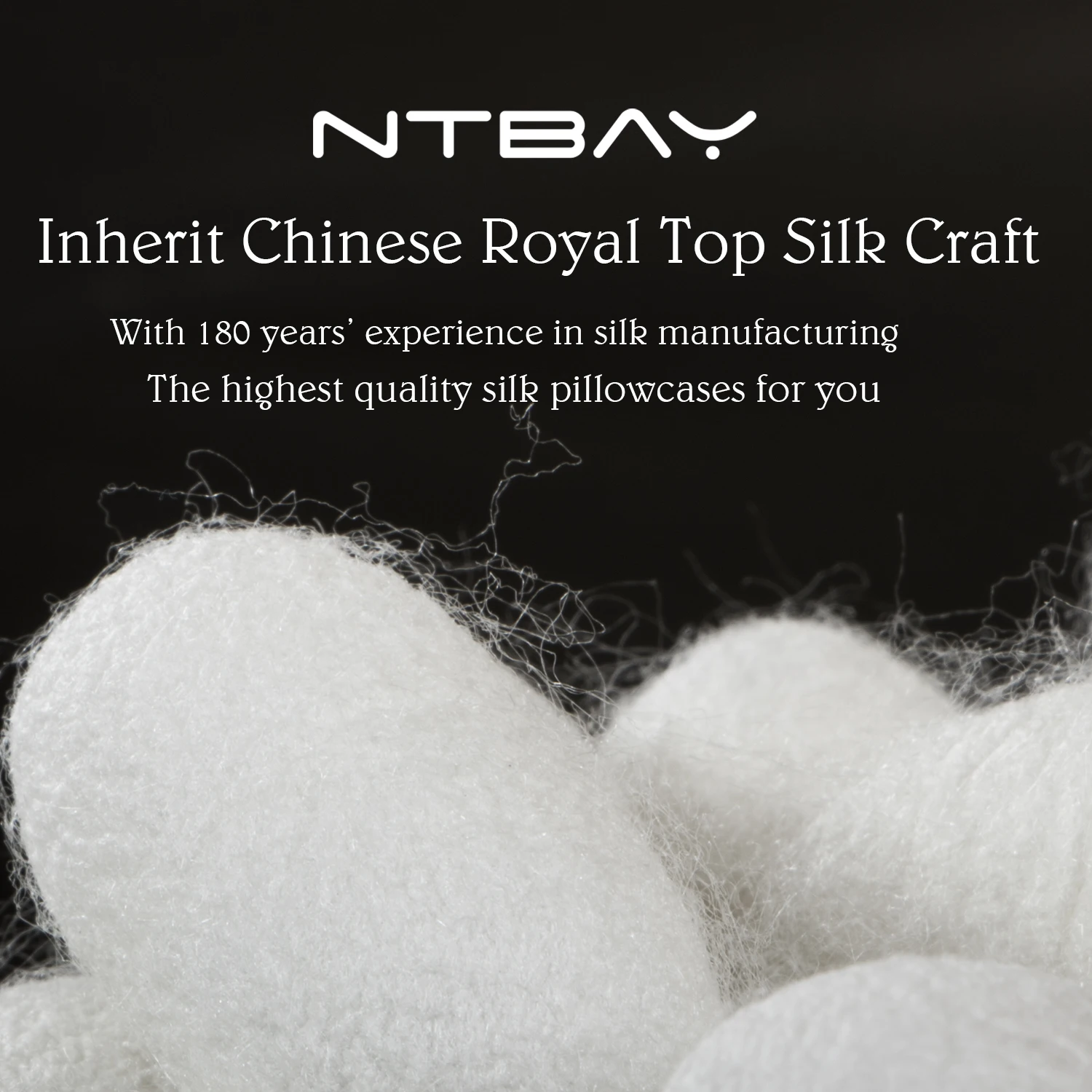
Beyond Momme: Other Critical Indicators of Silk Sheet Quality
While momme weight is the primary indicator of silk quality, several other factors play crucial roles in determining the overall excellence of silk bedding:
Silk Type and Origin
Mulberry silk is widely recognized as the gold standard for bedding. Produced by Bombyx mori silkworms fed exclusively on mulberry leaves, this silk offers exceptional smoothness, durability, and hypoallergenic properties.
Other varieties include:
* Tussah silk: Wild-harvested, with a more textured feel and natural color variations
* Eri silk: More textured than mulberry, sometimes called “peace silk” as it’s harvested without harming silkworms
* Muga silk: Golden-hued silk known for its glossiness but rarely used in bedding
Grade of Silk
Silk is graded on an “A” scale, with 6A representing the highest quality:
* 6A: Perfect, uniform silk with the longest fibers and fewest imperfections
* 5A: Excellent quality with minimal variations
* 4A: Very good quality with occasional minor inconsistencies
* 3A and below: Increasingly visible imperfections and shorter fiber lengths
Weave Type
The weave significantly impacts how silk feels and performs:
* Charmeuse: The classic silk weave with a smooth, lustrous front and matte back
* Habotai: Lightweight and less expensive, but less durable
* Silk satin: Heavy, extremely smooth finish, but can feel less breathable
Certifications
Quality silk sheets often carry certifications that verify their authenticity and safety:
* OEKO-TEX Standard 100: Ensures the fabric is free from harmful substances
* GOTS (Global Organic Textile Standard): Verifies organic production methods
* Peace Silk Certification: Confirms no silkworms were harmed in production
Craftsmanship Indicators
Pay attention to finishing details that indicate quality construction:
* French seams that protect edges from fraying
* Even, consistent color throughout the fabric
* Smooth, regular stitching with appropriate thread tension
* Properly aligned patterns at seams
The complete guide to Mulberry silk bed sheets offers deeper insights into these quality indicators and explains why the finest silk bedding excels across multiple dimensions, not just momme weight alone.
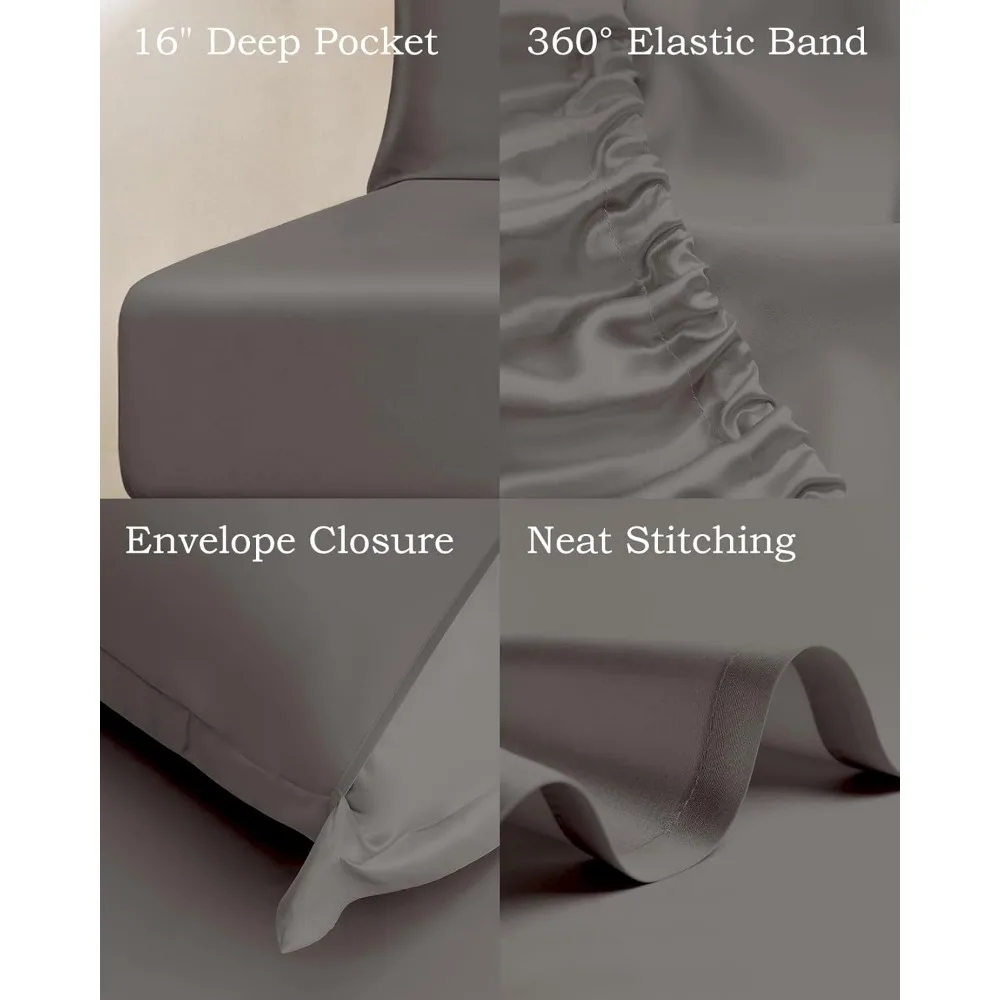
Common Misconceptions About Silk Sheet Quality
As you shop for silk bedding, be aware of these prevalent myths that can lead to disappointing purchases:
MYTH: Higher thread count always means better silk quality.
REALITY: Thread count is largely irrelevant for silk. A 1,000 thread count silk sheet could actually be inferior to a 600 thread count sheet if the momme weight and silk grade are lower.
MYTH: Silk-like fabrics offer similar benefits at lower prices.
REALITY: Polyester satin and “silk-alternative” fabrics may look similar initially but lack silk’s temperature-regulating properties, moisture-wicking capabilities, and longevity. They also tend to create static electricity and don’t offer the same benefits for skin and hair.
MYTH: Silk sheets require dry cleaning and delicate handling.
REALITY: Quality silk sheets can be hand washed or machine washed on gentle cycles with mild detergents. With proper care, they’re surprisingly durable and maintain their beauty for years.
MYTH: Silk is purely a luxury indulgence without practical benefits.
REALITY: Silk’s unique properties make it a functional investment that can improve sleep quality, benefit skin and hair health, and outlast cotton sheets when properly maintained.
MYTH: If it feels slippery and shiny, it must be good silk.
REALITY: Some manufacturers treat lower-quality silk with silicone or other finishes to create an artificially slick feel that washes away over time. Authentic quality silk has a natural luster and smooth feel that improves with washing.
Understanding whether thread count matters in silk bedding helps you avoid falling for marketing tactics that emphasize the wrong metrics. The most important thing is to focus on momme weight, silk type, and craftsmanship rather than thread count when evaluating silk sheet quality.
How to Shop for Quality Silk Sheets: A Practical Guide
Armed with knowledge about what truly determines silk quality, use this checklist when shopping for your next set of silk sheets:
Essential Quality Checklist
- Verify momme weight: Look for 19-25 momme for the best combination of luxury and durability
- Confirm silk type: Pure 100% Mulberry silk is the gold standard for bedding
- Check silk grade: 6A grade represents the highest quality with longest fibers
- Examine the weave: Charmeuse weave offers the ideal balance of smoothness and durability
- Look for certifications: OEKO-TEX Standard 100 ensures the fabric is free of harmful substances
- Assess finishing details: Quality sheets feature French seams, consistent stitching, and even coloration
Questions to Ask Retailers
- What is the exact momme weight of these sheets?
- Is this 100% Mulberry silk or a blend?
- What grade of silk is used (4A, 5A, 6A)?
- What certifications do these sheets carry?
- How are the seams finished to prevent fraying?
Authenticating Real Silk
Simple tests to verify you’re getting genuine silk:
* Burn test: (For sample swatches only) Genuine silk burns slowly with a smell like burning hair and leaves crushable ash
* Ring test: Real silk can be pulled through a ring due to its natural compressibility
* Feel test: Authentic silk feels cool to the touch initially, then warms up
Price Expectations
Quality silk sheets typically fall into these price ranges (for Queen size):
* 16-19 momme: $250-$400
* 19-22 momme: $350-$550
* 22-25 momme: $450-$800+
Remember that extremely low prices often indicate either very low momme weight or non-Mulberry silk. When it comes to silk bedding, extraordinarily low prices usually signal compromises in quality.
Discovering why you should choose Mulberry silk sheets can help you make a more informed decision about which type of silk best suits your needs and preferences.
Understanding Silk’s Unique Benefits Over Other Fabrics
Silk’s exceptional qualities extend far beyond luxury and aesthetics. These natural properties make it uniquely beneficial for sleep and skin health:
Superior temperature regulation: Silk naturally adjusts to body temperature, keeping you cool in summer and warm in winter through its protein structure and moisture management properties
Hypoallergenic properties: Silk resists dust mites, mold, and mildew naturally, making it ideal for allergy sufferers
Moisture-wicking capabilities: Silk absorbs up to 30% of its weight in moisture without feeling damp, keeping skin hydrated while preventing bacterial growth
Friction reduction: The smooth protein fibers create less friction against skin and hair, reducing irritation, “sleep creases,” and hair breakage
Natural protein composition: Silk contains 18 amino acids that interact positively with human skin, unlike petroleum-based synthetic alternatives
Longevity with minimal maintenance: Quality silk bedding, when properly cared for, can outlast cotton sheets by years, making it cost-effective over time
These benefits directly connect to silk’s physical structure—the long, continuous protein fibers that give silk its unique properties cannot be replicated by synthetic materials or lower-quality natural fibers.
For those concerned about skin health, Mulberry silk bedding’s skin benefits are particularly noteworthy. Many dermatologists recommend silk pillowcases and bedding for patients with sensitive skin or those concerned about facial wrinkles and hair damage.
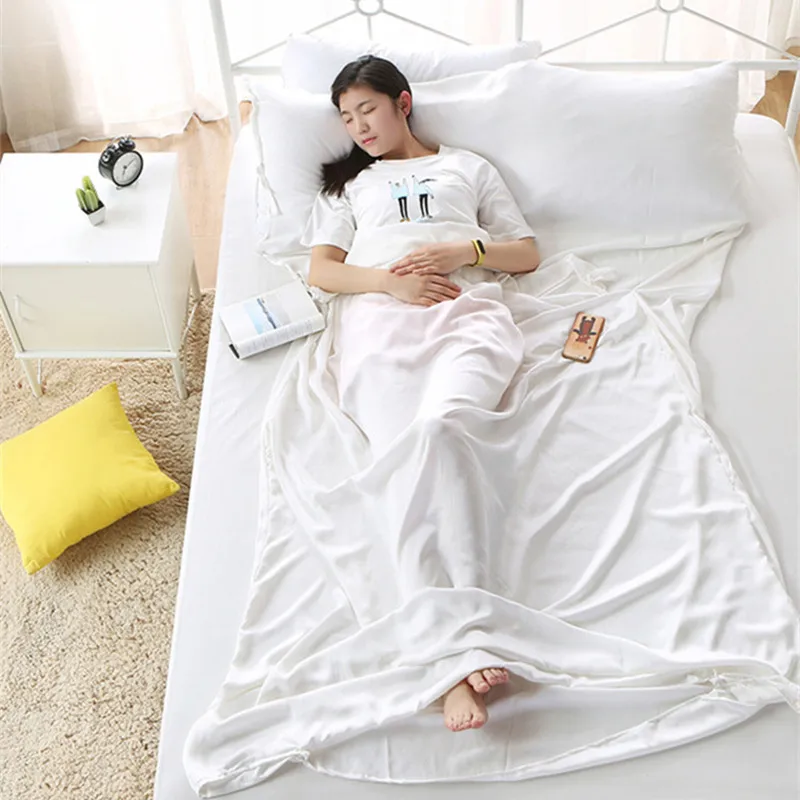
Full-size Silk Sheets, King Size Silk Sheets, Queen Size Silk Sheets, Twin Size Silk Sheets, Washable Silk Sheets
Price range: $95.95 through $178.37 Select options This product has multiple variants. The options may be chosen on the product page100% Silk Sheets, Green Silk Sheets, King Size Silk Bedding Set, Mulberry Silk Bedding Sets, Queen Size Silk Bedding Set
Price range: $1,246.21 through $1,615.22 Select options This product has multiple variants. The options may be chosen on the product pagePink Silk Sheets, Twin Size Silk Sheets
$171.80 Select options This product has multiple variants. The options may be chosen on the product pageFull-size Silk Sheets, Pink Silk Sheets
$136.31 Select options This product has multiple variants. The options may be chosen on the product pageGrey Silk Sheets, Silk Sheet and Pillowcase Set
Price range: $88.20 through $146.64 Select options This product has multiple variants. The options may be chosen on the product pageBamboo Silk Sheets, Cooling Silk Sheets
Price range: $130.76 through $177.80 Select options This product has multiple variants. The options may be chosen on the product page
Are Silk Sheets Worth the Investment?
Given their premium price point, many wonder if silk sheets truly justify their cost. Let’s break down the value proposition:
Cost-Benefit Analysis:
Quality silk sheets typically cost 3-5 times more than decent cotton sheets initially. However, when you consider that properly maintained silk sheets can last 7-10 years (versus 2-3 years for quality cotton), the cost-per-use often works out similar or even favorable for silk.
Health and Comfort Benefits:
The hypoallergenic, temperature-regulating, and skin-friendly properties of silk provide tangible health benefits. Many users report better sleep quality, fewer skin irritations, and reduced hair breakage—benefits that continue night after night.
Reduced Need for Other Products:
Many silk users find they spend less on night creams, anti-wrinkle products, and hair treatments due to silk’s natural properties. Some even report using less air conditioning in summer due to silk’s cooling properties.
When Silk Might Not Be Right:
Despite these benefits, silk isn’t for everyone. If you have pets with sharp claws, very young children prone to accidents, or simply prefer the crisp feel of cotton, silk might not be your ideal choice. Additionally, the initial investment can be prohibitive for some budgets.
Ultimately, silk sheets are worth the investment if you value exceptional sleep comfort, have sensitive skin or hair concerns, or appreciate luxury items that deliver practical benefits beyond aesthetics. Think of quality silk bedding as an investment in nightly comfort and wellbeing rather than simply a luxurious splurge.
For a more detailed analysis, our guide on whether silk bed sheets are worth the investment explores the long-term value proposition of choosing quality silk bedding.
When shopping for silk sheets, remember that momme weight—not thread count—is your most reliable indicator of quality. By focusing on momme weight along with silk type, grade, and craftsmanship, you’ll be well-equipped to select bedding that offers the perfect balance of luxury and value.
Browse our collections of Mulberry silk sheets, 100% silk sheets, and complete luxury silk bedding sets to experience the difference that truly quality silk can make in your sleep experience. Our queen size silk sheets are particularly popular for those looking to transform their bedroom into a luxurious retreat.
At Sanctuary Soft, we believe that understanding the true metrics of silk quality leads to more satisfying purchases and better sleep experiences. When you invest in properly measured silk bedding, you’re not just buying sheets—you’re investing in nightly comfort that can transform how you feel every morning.

